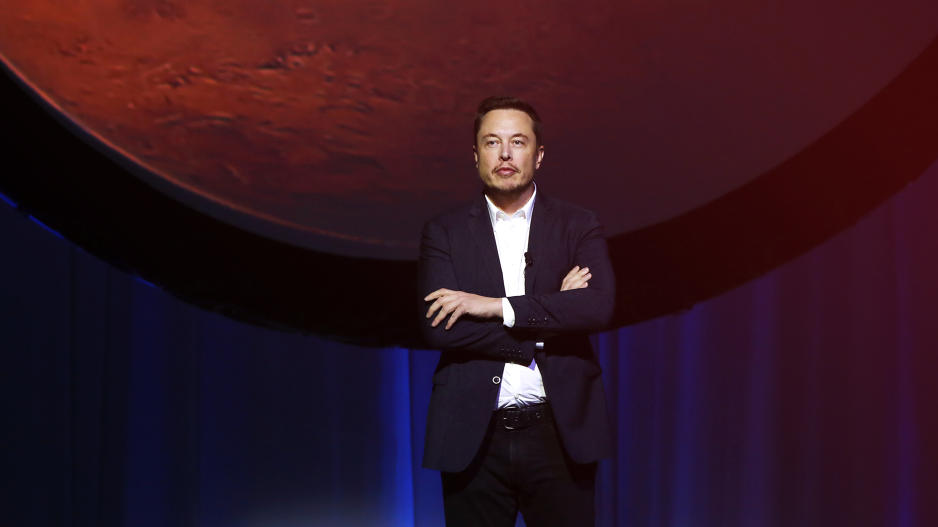Two Powerful Emotions Leaders Need To Know How To Tap (At The Same Time)
Last September, Elon Musk publicly unveiled a sweeping vision to colonize Mars. The SpaceX founder and CEO framed those ambitions as nothing less than a bid to save humanity from self-destruction.
Whatever your opinion of Musk’s plans, his presentation of them was rhetorically effective—and a memorable departure from the tech leader’s notoriously dispassionate Twitter voice. In introducing his Mars plan, Musk tapped into two foundational emotions that every effective leader should know how to activate: hope and fear. Here’s how.
Firing Up The “Anticipation Machine”
“One path,” Musk said, “is we stay on Earth forever, and there will be some eventual extinction event . . . some doomsday event.” Then he switched to a more hopeful outcome: “The alternative is to become a space-faring civilization and a multiplanet species.” Turning to a video illustrating SpaceX’s vision for what travel to Mars might look like, Musk added, “The Mars colonial fleet would depart en masse, kind of like Battlestar Galactica.”
Throughout his talk, Musk didn’t resort to high-flown, flowery language—he never has. Still, he deftly crafted his message to generate an emotional response, something that the most effective leaders know how to do. It’s no secret why: Emotions help make people more likely to embrace a certain belief or idea, persuade them to follow, and spark change.
And change of any kind can stir emotions. Neuroscientists believe that the emotional parts of the brain are the first to respond to new and unexpected events through the “sympathetic” nervous system—which is responsible for the “fight or flight” response. In other words, our minds have evolved in order to anticipate events that haven’t happened yet, and our emotions are a big part of the way they do that. In his book Stumbling on Happiness, author and researcher Daniel Gilbert describes the brain as an “anticipation machine, and making the future is the most important thing it does.”
So when leaders describe in captivating detail how the world could be different, people feel something—they don’t just think about it. We automatically imagine ourselves there, in that future state or condition, and try to determine if the change will be good or bad for us. If it registers as a potential threat, our brains tell our bodies how to react—with fear. Our hearts race, palms sweat, and arms and legs get ready for action.
Great leaders get out ahead of this negative emotional response by gauging the mood of their audiences and listening to their concerns with empathy. Then they figure out the best way to invoke emotion to help sway them toward their own point of view and propel them to act.
Hope acts as a defibrillator to a lifeless heart, creating a jolt of positive energy that inspires people to once again think goal-oriented thoughts. What stands in the way of action, though, is most often fear. It fuels anxiety, which creates a defensive or protective energy that prevents people from embracing new ideas, immobilizing them.
But that doesn’t mean fear can’t motivate people to action, too. In fact, both of these highly charged emotions, when channeled in constructive ways through communication, can help leaders guide their constituents toward productive goals.
How Anxiety Motivates People
Fear can push people away from certain ideas or situations and drive them toward a desired action. The adrenaline rush it often initiates can make them pay closer attention, think more clearly, or even perform better. For example, one recent Harvard Business School study found participants who reported feeling more anxious or excited about tasks like singing, giving a speech, or tackling a math problem actually sang better, spoke more persuasively, and outperformed on math tests.
Still, there’s a big difference—both practical and ethical—between using justifiable anxieties as motivation and exploiting people’s fear. Sometimes people’s worries make sense in light of imminent threats, like a competitor that’s gaining ground, customers or partners at risk, or unfavorable conditions. Those situations make for good opportunities for leaders to tap into. You can explain the reasons you’re also frightened about a situation, share stories from people on the front lines where the danger is greatest, and empathize with your teams’ concerns.
What you don’t want to do is stoke fear in ways that threaten or marginalize others, or blow things out of proportion. To help you strike that balance, you need hope.
Mixing Hope And Fear
As Commander William Adama in the Battlestar Galactica series Musk referred to once put it, “It’s not enough to just live. You have to have something to live for.” Hope moves people to pine for something better. It focuses attention on a desired outcome and inspires them to imagine what their life will be like when that future arrives.
Hope pulls people toward your vision and gives them courage to persevere through fear and sadness—because something worth fighting for awaits them. To trigger feelings of hope, give people something specific to look forward to: a noble cause, a clear vision of a glorious yet attainable future, the promise of great reward—won fairly, through hard work, and not at others’ expense.
Musk first used a physical analogy about Mars to drum up some excitement: “It would be quite fun, because you have gravity, which is about 37% that of Earth, so you’d be able to lift heavy things and bound around and have a lot of fun.” He followed that with a more fear-inspiring comparison, pointing to the long-term sustainability challenges faced by the 7 billion people on Earth, relative to the zero people on Mars.
Whether or not he succeeds, Musk knows that executing such a bold vision requires a lot of energy from stakeholders as they leap, fight, and climb their way to the future. Tapping into the most fundamental emotions that animate us as humans is one of the surest ways to sustain all that energy—and channel it into a productive cause.
Patti Sanchez is chief strategy officer at Duarte Inc. and coauthor of Illuminate: Ignite Change Through Speeches, Stories, Ceremonies and Symbols. Follow her on Twitter at @PattiSan.
Fast Company , Read Full Story
(8)














